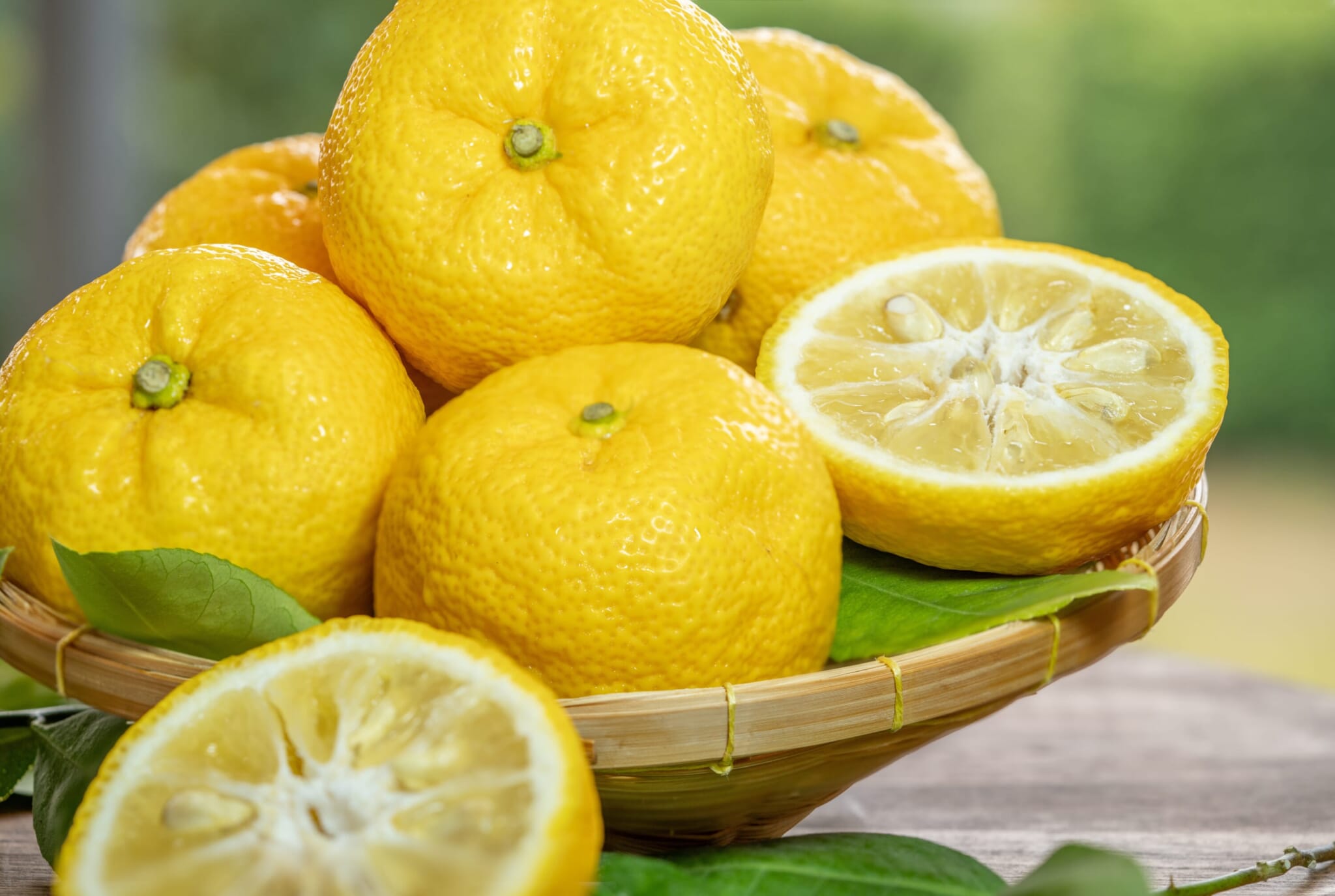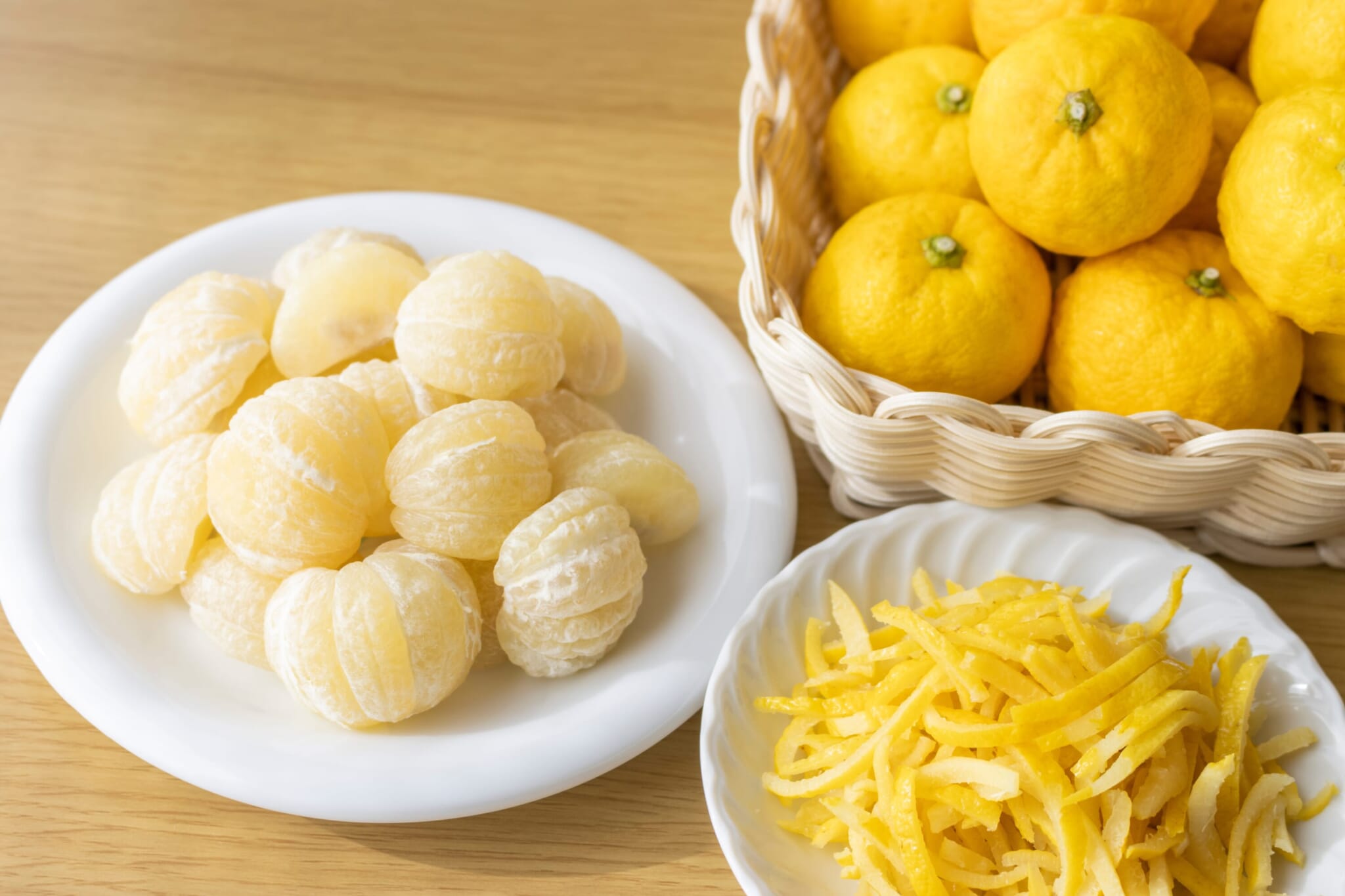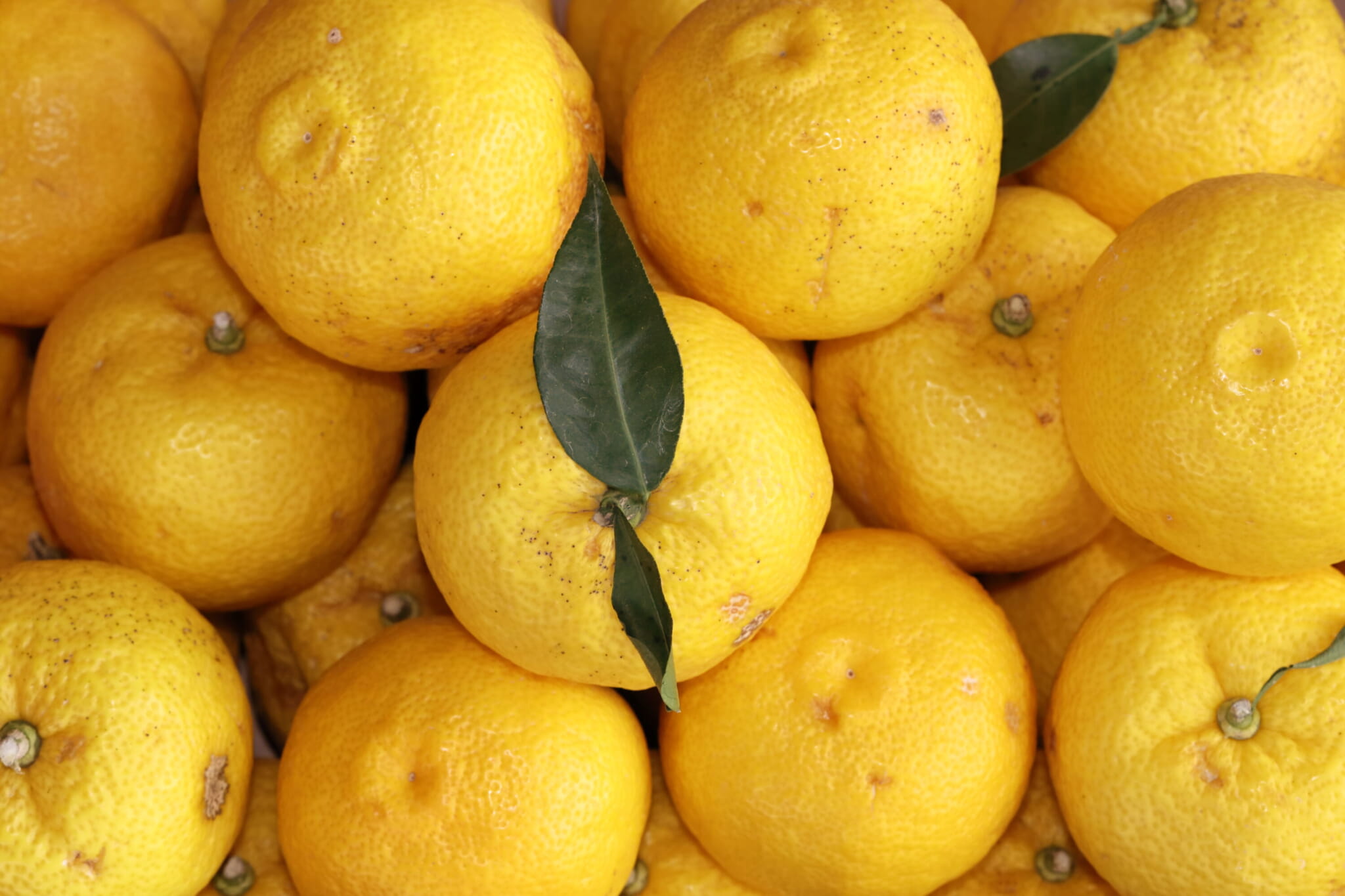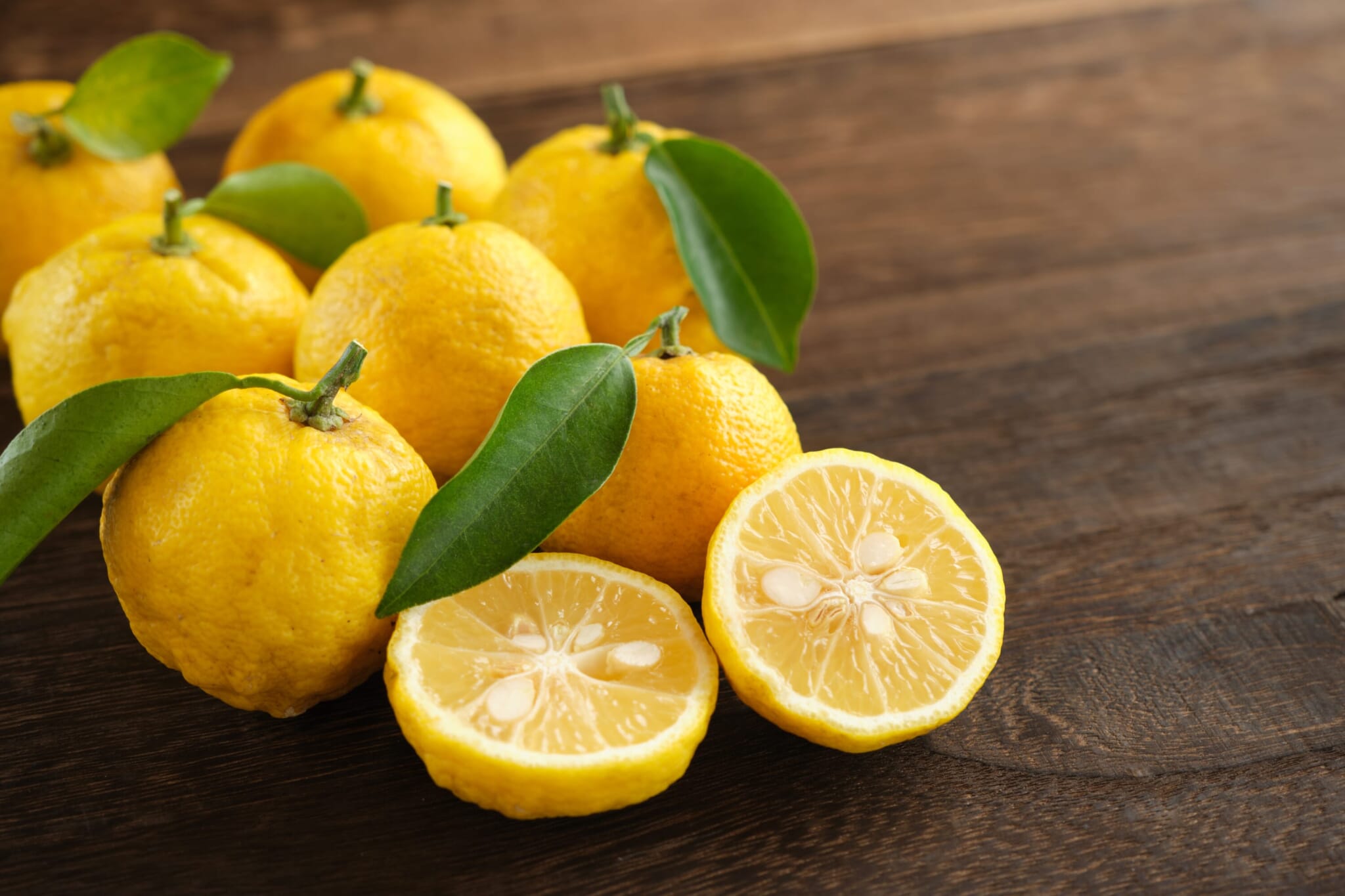
What is Yuzu?
Yuzu is a tiny, ping pong ball-shaped yellow citrus found in lots of Japanese recipes, including sauces, seasonings, cocktails and jams. The fragrant aroma is instantly recognizable and incredibly versatile.
Contrary to popular belief, yuzu is not a lemon. Sometimes called by its Korean name, “yuja,” yuzu is a type of citron, which means the fruit has an exceptionally thick rind. When combined with a large number of seeds, this equates to a minimal amount of juice per fruit, which in turn means that it can be quite expensive. The small yellow fruit is one of the few citruses that doesn’t lose its sharpness or flavor when heated to high temperatures, making it suitable for cooking.
Yuzu and Japan
Yuzu is believed to have originated in the upper basin of the Yangtze River in China, although nowadays it is most commonly found in Japan. The Japanese kind is said to be the most fragrant out of all varieties, which may be why Japan is the largest producer of the fruit itself.
Kochi Prefecture is the biggest producer of yuzu in the country and is considered the place which revitalized the fruit. The town of Umaji, with a mere 800 occupants, produces 800 tons of yuzu every year. It is widely credited with kickstarting yuzu production in Japan. Previously a logging town, in the 1960s, logging started to decline drastically, so the loggers decided to focus on producing yuzu instead. Nowadays, the area is known as Yuzu Road. In the same town, there is a festival called “Yuzu Hajimaru Festival” held every fall. Visitors can enjoy a variety of yuzu-related activities and sample many different kinds of dishes and drinks.
Many hot springs also have a “yuzu day,” during which the bath is filled with cut yuzu, for that beautiful fragrance.

Benefits of Yuzu
As the fruit gains global popularity, more studies have started to look at the health benefits of yuzu. It is rich in antioxidants such as limonene, which can prevent cell damage. It also contains high levels of vitamin C. In fact, the vitamin C content is more than three times higher than that of ordinary lemons.
There are many products that tout the benefits of yuzu for boosting hair strength and shine, with special yuzu hair oil produced in Kochi Prefecture. Other products use yuzu to promote vitality, including several Korean skincare items.

How to Use Yuzu
Yuzu has a variety of uses, from hair oil to cooking. This section looks at how to use it in cooking.
Yuzu as a Condiment
A small amount of yuzu will go a long way, meaning that it lends itself to condiments.
Yuzu Kosho
Yuzu kosho is a highly versatile Japanese condiment, consisting of yuzu peel and hot pepper. Red yuzu kosho is made from red chilies and green kosho from green chilies. It has a fragrant, spicy flavor palette, often used in small amounts to season a Japanese hotpot, dressings and even fried chicken or avocado toast.
Yuzu Sauce (Ponzu)
Ponzu is a sauce made from yuzu, honey and soy. It is most commonly used as a dipping sauce, for dishes such as shabu-shabu (a Japanese meat hot pot) and sometimes as a dip for noodles.
Yuzu as a Garnish
Yuzu peel is often found in tubs in the freezer aisle in Japan. The peel is designed to be used as a garnish, often atop hot soba noodle dishes or even in cocktails.
Yuzu Jam
Because the fruit does not lose its flavor at high temperatures, it is perfect for jam, with only a small amount needed for a full impact.
Yuzu jam is also used to make a hot tea, known as yuja tea in Korea. Like the Western version of honey and lemon (or ginger), yuja tea is said to be great for colds.
Yuzu-infused Cocktails
In recent years, yuzu has become a popular cocktail ingredient, as mixologists get in on the action, combining it with spirits such as gin and vodka as well as soda. It also makes a great mocktail ingredient.

Other Articles About Japanese Ingredients
If you liked this, check out our other guides to Japanese ingredients:









